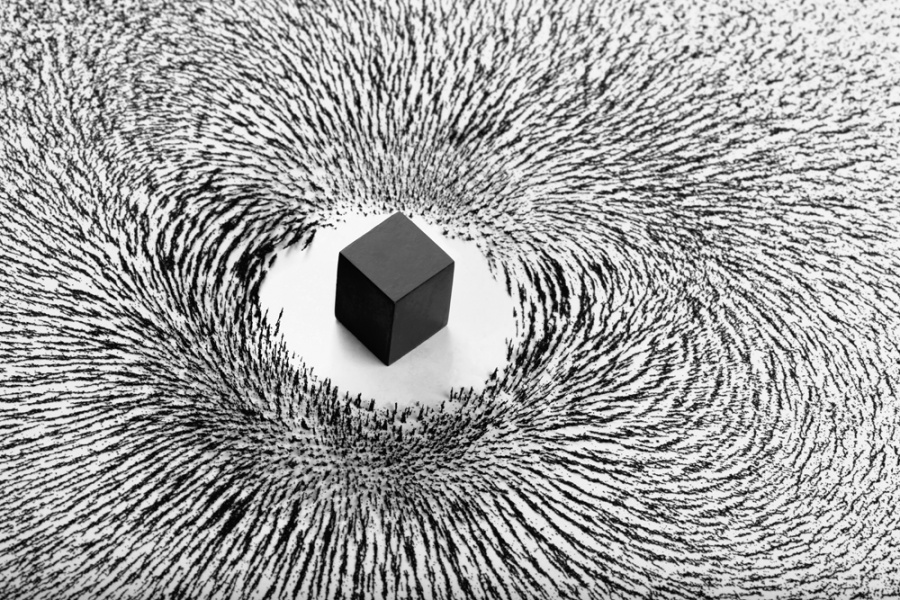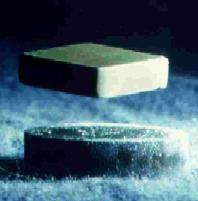Flux Pinning and More
When materials reach
their superconductive state, cool stuff starts to happen. As
we talked about previously with Type I and Type II
materials, as they reach their Tc the magnetic flux begins
to be forced out of the material.
A Type I material is typically a form of metal or metalloid that shows a small amount of conductivity at room temperature and require the coldest temperatures for superconduction ("Type 1 Superconductors"). Type II materials are various compound of metals and alloys excluding vanadium, technetium, and niobium ("Type 2 Superconductors").
Type II materials can act in a very strange way. They can enter a mixed state, as shown to the right, where there is a super conducting current resulting from the Meissner effect, and then they also obtain a different attribute. Shown by the green arrows are vortices. These vortices are small induced currents, but the interesting part is that these vortices allow small amounts of magnetic flux into the superconductor ("Vortices").These vortices create something called flux pinning.
A Type I material is typically a form of metal or metalloid that shows a small amount of conductivity at room temperature and require the coldest temperatures for superconduction ("Type 1 Superconductors"). Type II materials are various compound of metals and alloys excluding vanadium, technetium, and niobium ("Type 2 Superconductors").
Type II materials can act in a very strange way. They can enter a mixed state, as shown to the right, where there is a super conducting current resulting from the Meissner effect, and then they also obtain a different attribute. Shown by the green arrows are vortices. These vortices are small induced currents, but the interesting part is that these vortices allow small amounts of magnetic flux into the superconductor ("Vortices").These vortices create something called flux pinning.
(10*)




